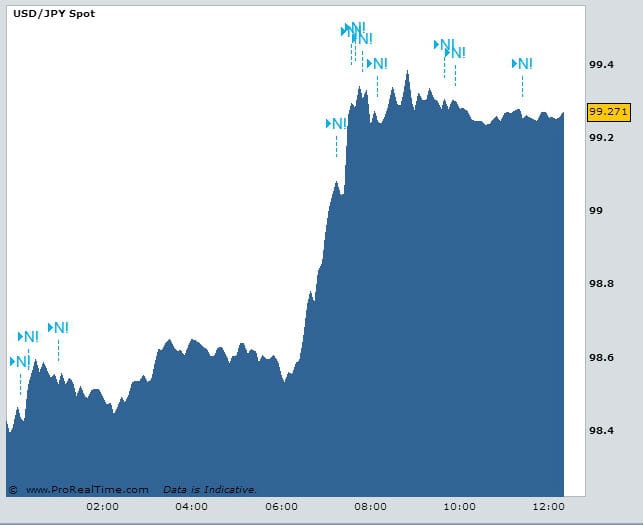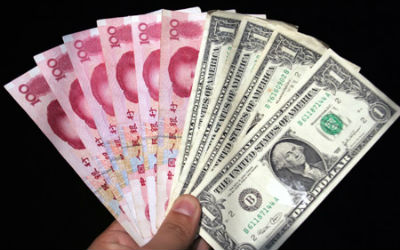With concerns about a possible American-led military strike in Syria subsiding over the weekend, the dollar rallied strongly against the yen, hitting a one-month high this morning. Concerns about the potential economic effects of a military intervention, which would most likely have seen oil prices rise significantly, had been driving many investors towards the yen, which is considered something of a safe-haven currency in times of economic instability.

Source: FXStreet
The dollar rose 1.2% to 99.38 yen, the highest point since August 2nd, and well above last week’s trough of 96.81 yen. The euro also recovered significantly against the yen, rising 1.2% to 131.27 yen.
Last week’s yen rally was partly driven by escalating tensions over the conflict in Syria, with Western leaders threatening retaliation for the Assad regime’s recent chemical weapons attack. This plan now appears to be on hold, with President Obama deciding to seek congressional approval for the strikes, and plans for UK involvement being voted down in the House of Commons. So while this has not completely dispersed fears among investors, it has certainly calmed the waters somewhat.
Another factor in play was the likelihood that the Fed would begin reducing its monetary stimulus programme, which prompted a sell-off in emerging market assets and commodity currencies.
Talking to Reuters, Bank of Tokyo Mitsubishi currency economist Lee Hardman said “We see an improvement in investor risk sentiment on Syria. Also the China PMI data is a key driver as it is helping ease investor pessimism over the China growth outlook”
“All this is encouraging some renewed risk seeking behaviour by investors this week,” he said, before adding that he expects the dollar to hit the 100 yen level in the next few days.
Encouraging factory activity data coming out of China, which showed the fastest pace of expansion in more than a year in August, also boosted commodity currencies such as the Australian dollar, which was up 0.9% at $0.8981. Similarly encouraging eurozone survey data, released this morning, showed that factory activity expanded at its fastest pace in more than two years.
This is set to be a busy week on the economic releases front, with policy meetings of the European Central Bank and the Bank of England in midweek, and the US nonfarm payrolls on Friday. It is widely expected that the ECB will pledge to keep rates low in an effort to aid economic recovery.
Tradersdna is a leading digital and social media platform for traders and investors. Tradersdna offers premiere resources for trading and investing education, digital resources for personal finance, market analysis and free trading guides. More about TradersDNA Features: What Does It Take to Become an Aggressive Trader? | Everything You Need to Know About White Label Trading Software | Advantages of Automated Forex Trading









